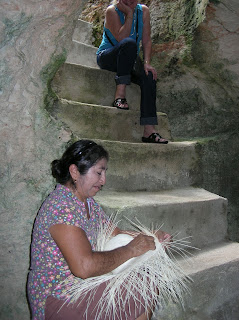I received an e-mail from a good friend and want to share it with you and I hope you, in turn, will want to share it with your family and friends. This little known fact about the board game Monopoly has recently come to light after being de-classified by the British Government in 2007. I checked both the internet and SNOPES, and it is a true story. Here is the e-mail I received from my friend, JS:
 Starting in 1940, an increasing number of British Airmen found themselves as the involuntary guests of the Third Reich, and the Crown was casting about for ways and means to facilitate their escape.
Starting in 1940, an increasing number of British Airmen found themselves as the involuntary guests of the Third Reich, and the Crown was casting about for ways and means to facilitate their escape.Now obviously, one of the most helpful aids to that end is a useful and accurate map, one showing not only where stuff was, but also showing the locations of 'safe houses' where a POW on-the-lam could go for food and shelter.
Paper maps had some real drawbacks -- they make a lot of noise when you open and fold them, they wear out rapidly, and if they get wet, they turn into mush. Someone in MI-5 got the idea of printing escape maps on silk because it's durable, can be scrunched-up into tiny wads, and unfolded as many times as needed, and makes no noise whatsoever.
At that time, there was only one manufacturer in Great Britain that had perfected the technology of printing on silk, and that was John Waddington, Ltd. When approached by the government, the firm was only too happy to do its bit for the war effort.
By pure coincidence, Waddington was also the U.K. Licensee for the popular American board game, Monopoly. As it happened, 'games and pastimes' was a category of item qualified for insertion into 'CARE packages', dispatched by the International Red Cross to prisoners of war.
Under the strictest of secrecy, in a securely guarded and inaccessible old workshop on the grounds of Waddington's, a group of sworn-to-secrecy employees began mass-producing escape maps, keyed to each region of Germany or Italy where Allied POW camps were located . When processed, these maps could be folded into such tiny dots that they would actually fit inside a Monopoly playing piece.
As long as they were at it, the clever workmen at Waddington's also managed to add:
At that time, there was only one manufacturer in Great Britain that had perfected the technology of printing on silk, and that was John Waddington, Ltd. When approached by the government, the firm was only too happy to do its bit for the war effort.
By pure coincidence, Waddington was also the U.K. Licensee for the popular American board game, Monopoly. As it happened, 'games and pastimes' was a category of item qualified for insertion into 'CARE packages', dispatched by the International Red Cross to prisoners of war.
Under the strictest of secrecy, in a securely guarded and inaccessible old workshop on the grounds of Waddington's, a group of sworn-to-secrecy employees began mass-producing escape maps, keyed to each region of Germany or Italy where Allied POW camps were located . When processed, these maps could be folded into such tiny dots that they would actually fit inside a Monopoly playing piece.
As long as they were at it, the clever workmen at Waddington's also managed to add:
1. A playing token, containing a small magnetic compass;
2. A two-part metal file that could easily be screwed together;
3. Useful amounts of genuine high-denomination German, Italian, and French currency, hidden within the piles of Monopoly money!
British and American air crews were advised, before taking off on their first mission, how to identify a 'rigged' Monopoly set -- by means of a tiny red dot, one cleverly rigged to look like an ordinary printing glitch, located in the corner of the Free Parking square.
Of the estimated 35,000 Allied POWS who successfully escaped, an estimated one-third were aided in their flight by the rigged Monopoly sets.. Everyone who did so was sworn to secrecy indefinitely, since the British Government might want to use this highly successful ruse in still another, future war.
The story wasn't declassified until 2007, when the surviving craftsmen from Waddington's, as well as the firm itself, were finally honoured in a public ceremony.
Realize most of you are (probably) too young to have any personal connection to WWII (Sep. '39 to Aug. '45), but this is still interesting.
In my last post, it was hats off to the artisans of Becal, Campeche. I now take my hat off to those ingenious Brits, and especially to those loyalists working at Waddington’s Ltd, Great Britain. Thank you just doesn’t seem sufficient for their efforts.















